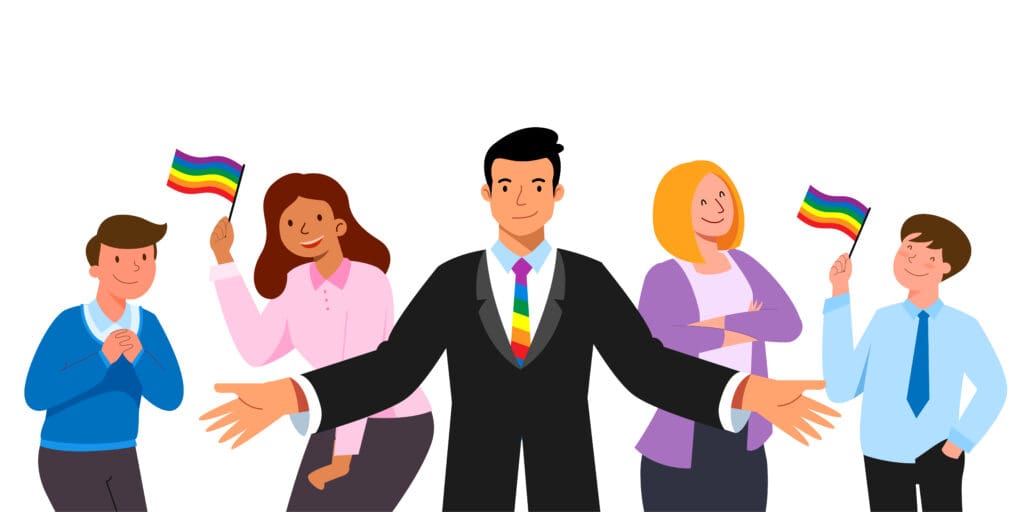If you have a white collar job involving a desk and a computer, you have most probably heard of the term ‘diversity training’. At a glance, it sounds like it’s related to acceptance of racial and ethnic minorities in the workplace- sort of a guide on how to make the office comfortable for employees from different cultural backgrounds.

That’s kind of correct, but it’s a very surface level understanding of such initiatives. In fact, there’s a lot to learn from these programs. They help us understand our unconscious biases, and the subtle ways in which we can make people feel included. Sounds interesting, doesn’t it?
In this article, we will look at how cultural diversity impacts a workplace. We will discuss what is inclusivity, why it is important, and the possible challenges in building an inclusive office. Think of it as a step toward understanding the needs and concerns of your colleagues, subordinates and leaders, who come from different backgrounds. Are you ready?
America: The melting pot of cultures
The origin of the United States, rooted in the promise of a New World full of opportunities, stands true to its cause even today. USA is one of the largest international hubs attracting migrants, fresh talent, businesses, cultures- basically, people who want to work for a better life.
In the 18th and 19th centuries itself, around 60 million people migrated to the US- refugees, job-seekers, opportunists and entrepreneurs. Despite such a rich cultural heritage, the American workforce has been largely dominated by men. Also, the better paying, “white-collar” jobs were mostly held by white people.
Today, things are starting to change for the better. While 75% of the population is white, the rest of it includes diverse ethnicities like African American, Native Indian, Asian, Indian, Hispanic, etc. Moreover, almost 47% of the American workforce is all women.
Indeed, America is a melting pot of cultures, and in desperate need of equal opportunities for different races and genders. In light of such cultural diversity, it is important to have conversations about inclusivity in the work place.
Benefits of diversity and inclusion
Broadens perspectives

Research has shown that culture and cognition are related. Our culture and upbringing have an influence on how we think, solve problems, and make decisions. For example, say you are designing an advertising campaign for a product on a global level. If you have a diverse team on board, they can help you include culturally significant symbols, music, colors, etc. into the campaign, to better appeal to certain target audiences.
Larger talent pool
A 2019 poll revealed that 40% of people in USA have faced discrimination in the workplace. Discrimination in the hiring process does a lot of damage to people on the receiving end of it. At the same time, recruiters lose out on a lot of potential talented candidates.

Promoting inclusion and diversity attracts candidates from varied backgrounds. It welcomes diverse candidates to interview for openings, and encourages them to express their identity. A healthy work environment that promotes inclusivity and equality is good for employee morale, which in turn affects employee retention.
Reach out to diverse audiences
Having diverse members onboard is a great way of understanding the needs of different communities and expanding one’s customer base. For example, a clothing brand would benefit from the insights of a fashion designer who is a person with disability.

They can not only help understand the needs of the community, but also reach out to potential customers through advertising, and help recruit volunteers for user feedback and research. Similar strategies work with communities like racial minorities, age groups with niche interests, like the Gen Z, the LGBTQ+ community, and so on.
Although, there is such a thing as queer-baiting, pinkwashing, and greenwashing. These terms are basically used when you advertise your products for a particular community, but apart from these surface actions, you don’t really do anything for their cause.
Take for example, how companies start putting up queer ally logos and announcing their acceptance of the LGBTQ+ community in the month of June. In reality, they probably invest money in a political party that passes discriminatory bills against the community.
Marketing and advertising should be backed by genuine efforts to hire people from the community, contribute to the cause through CSR initiatives, and speaking up for their rights! True, that’s a taller order than simply posting a black square in solidarity, but insincere and shallow advertising is worse than nothing!
Challenges in building an inclusive workspace
Here are some common barriers to implementing inclusive practices in the workplace.
Poor engagement
Sometimes employees are not really motivated to bring about changes in the workplace. This happens most probably with those who either don’t face discrimination in the work place, or those who do face it, but think that workplace diversity initiatives won’t help change it.
Either way, it’s really important to get all employees on board before you begin. You can encourage people to talk about their experiences of discrimination, and share stories about how coming together can help create positive change.
Prejudice and negative attitudes
Sometimes, leaders who are in a position to create change, themselves hold stereotypes and prejudices against certain communities. Such attitudes translate into subtle discrimination, e.g. not inviting a co-worker to an after-work event, or a house party, or ignoring them while recommending people for a promotion.

That’s why people should be encouraged to work in diverse teams, so that they have an opportunity to interact with people who are different from them.
Lack of trust
Sometimes, people or color, gender minorities, etc. might not trust the management well enough to participate in diversity initiatives. They might feel like they are being hired as ‘token representatives’ of their group. They also might think that if they express their identity in the workplace, they will be treated differently, e.g. excluded from informal work circles.
How to create an inclusive workplace environment
Building an inclusive workplace is not an overnight makeover, it’s a gradual process that requires time, commitment, and efforts. Here are a few concrete steps that will take you closer to your goals.
- Diversity training programs
- Inclusive policies and practices
- Open communication and feedback
- Addressing unconscious bias
If you are a manager, employee or trainer who is interested in learning about diversity and inclusion in the workplace, I hope this article gave you an idea of where to start. Good luck!


GIPHY App Key not set. Please check settings